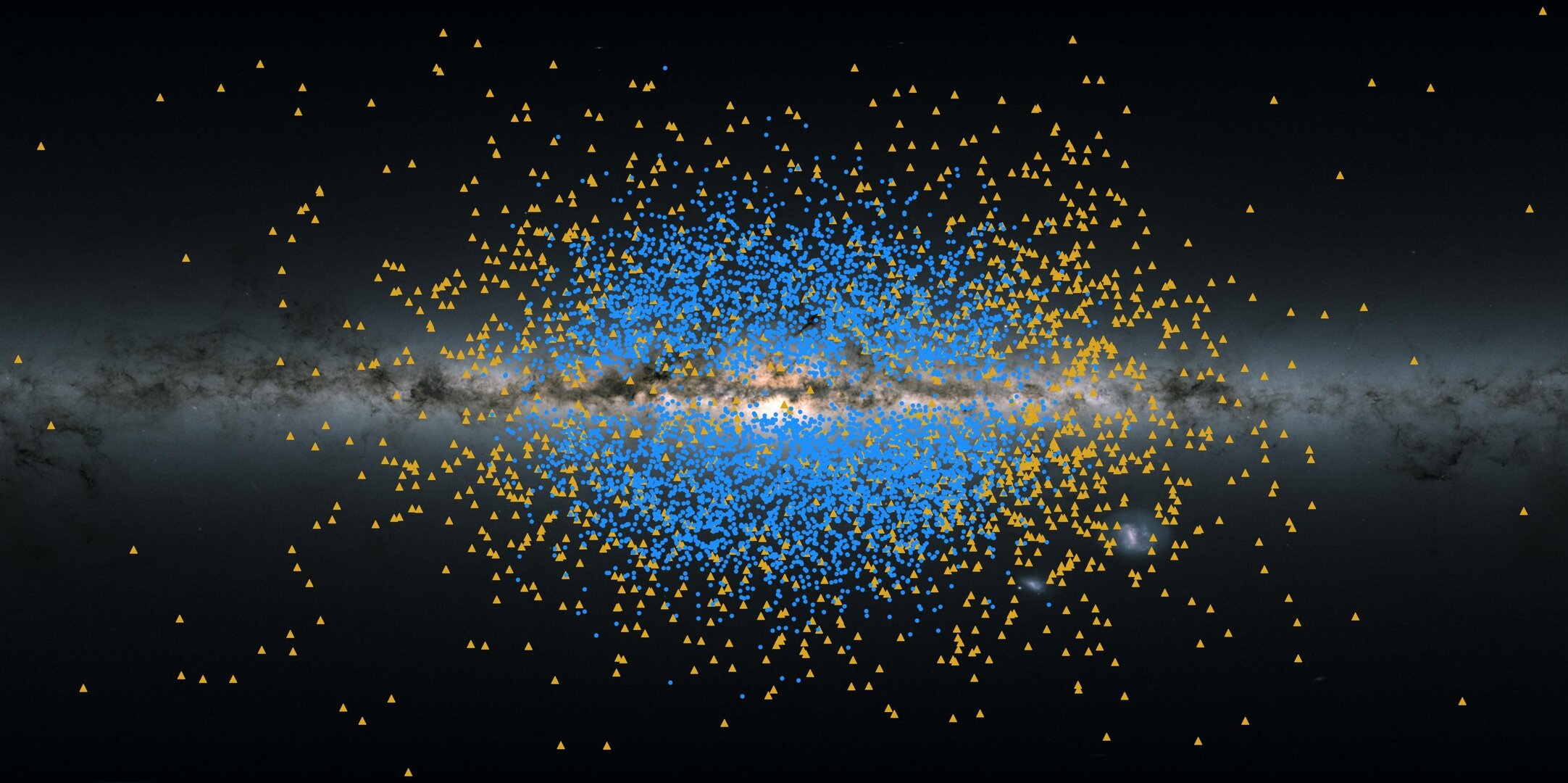Gaia discovers two starry streams 'Shakti and Shiva' that shaped infant Milky Way

The European Space Agency's Gaia space telescope has discovered two surprising streams of stars that formed and wove together over 12 billion years ago.
"The stars there are so ancient that they lack many of the heavier metal elements created later in the Universe’s lifetime. These heavy metals are those forged within stars and scattered through space when they die. The stars in our galaxy's heart are metal-poor, so we dubbed this region the Milky Way's poor old heart," said co-author Hans-Walter Rix, also of MPIA and the lead ‘galactic archaeologist’ from the 2022 work.
The two streams, named Shakti and Shiva after a divine couple from Hindu philosophy who unite to create the Universe, helped form the infant Milky Way. The two streams likely formed before even the oldest parts of our present-day galaxy’s spiral arms and disc.
Each stream contains the mass of about 10 million Suns, with stars of 12 to 13 billion years in age all moving in very similar orbits with similar compositions.
Despite their similarities, Shakti and Shiva exhibit distinct orbital characteristics. The stars in Shakti orbit a little further from the Milky Way's centre and in more circular orbits than Shiva stars.
"Some 12 billion years ago, the Milky Way looked very different to the orderly spiral we see today. We think that our galaxy formed as multiple long, irregular filaments of gas and dust coalesced, all forming stars and wrapping together to spark the birth of our galaxy as we know it. It seems that Shaki and Shiva are two of these components," ESA wrote in a post.
🆕 @ESAGaia discovers two surprising streams of stars that formed and wove together over 12 billion years ago.Named Shakti and Shiva, the two streams helped form the infant Milky Way 👉 https://t.co/6ju3PAN6AK pic.twitter.com/w40uUxrrAs
— ESA Science (@esascience) March 21, 2024
Launched in December 2013, Gaia has been surveying the skies and gathering an enormous amount of data for more than a decade. The telescope is creating a precise 3D map of more than a thousand million stars throughout our Milky Way galaxy and beyond to unravel the mystery surrounding our galaxy's origin, structure and evolution.
- READ MORE ON:
- Gaia
- Milky Way
- Shiva Shakti star streams










